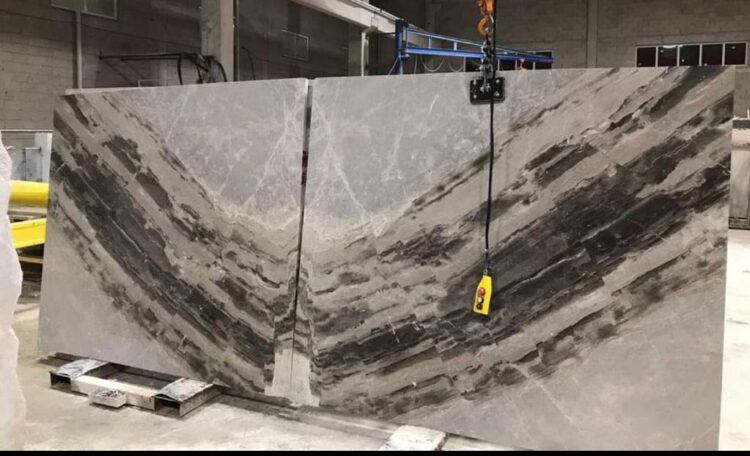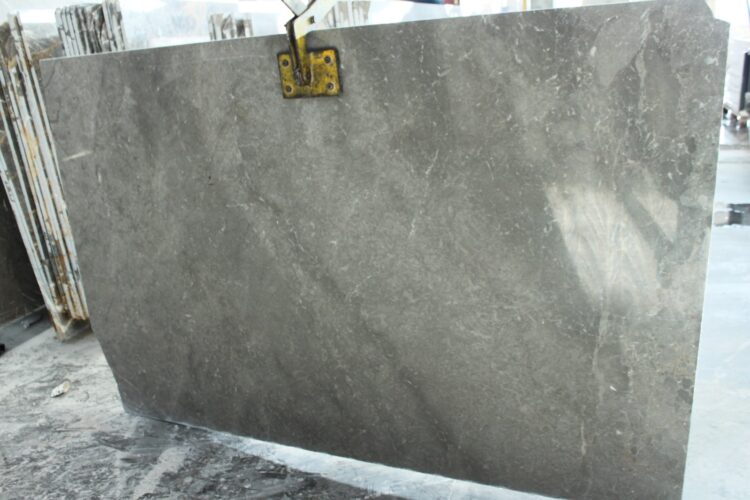Known for its beauty and durability, marble is a natural stone with great appeal. However, the environmental impacts of its mining and processing cannot be ignored. As sustainable practices gain importance, it becomes imperative for the marble industry to prioritize environmentally friendly approaches., We talked with Dr. Gamze Alptekin, a graduate of ITU Faculty of Architecture and a faculty member of Istanbul Kultur University Faculty of Architecture, about the sustainability of marble.
Please briefly talk about yourself and your professional background.
I completed my undergraduate and graduate education at ITU Faculty of Architecture, Department of Architecture. I was a research assistant at Anadolu University, Faculty of Fine Arts, Department of Interior Architecture. After working in Garanti Koza Construction project management group at the VKV (Vehbi Koç Foundation) American Hospital construction site, I returned to the academic environment at Beykent University Faculty of Architecture. I have worked at Istanbul Kultur University, Faculty of Architecture, Department of Architecture, since 2003. Thank you for including me in this article, but I would like to state that I am not an expert on marble. I have always been interested in natural stones. I was very impressed with using Marmara Marble in the original building by Senior Architect Fahrettin Ayanlar, the Project and Construction coordinator, in the VKV American Hospital project and the following tasks. From this point of view, I have been trying to follow the subject for years. By the way, although I did not have the chance to work directly with Senior Architect Fahrettin Ayanlar, the winner of the 2008 National Architecture Award of the Chamber of Architects in the field of Building, I would like to commemorate him by stating that I learned a lot from him during the project process.
What do you think about the sustainability of marble?
We architects always prefer natural materials, and we especially don’t suggest using imitations. However, when you use a natural building material, you consume it. Although it is very long-lasting and reusable, the stone dust that comes out during production and the inclusion of crushed stones in production can be evaluated positively in terms of sustainability. However, considering the extent of nature destruction and environmental pollution created during its extraction, we can say that it is not a very good reputation in terms of sustainability.
Are there ways to make marble production more sustainable?
Publications published by the Chamber of Geological Engineers and authorized institutions guide how to minimize the environmental impact of natural stone mining. These publications explain the selection of mining sites away from natural resources and habitats and the scientific rules to be followed when opening, operating and transporting mines. The important thing is to comply with these rules and realise that future generations’ environmental rights are being destroyed, starting from today, for short-term gains.
Local people and non-governmental organizations are consciously warning and reacting to environmental sustainability. It will be possible to conclude by aggravating the sanctions and encouraging incentives to protect the environment.
What are the challenges and opportunities of using marble sustainably?
It is difficult to open the marble quarry, extract the blocks, process them, and transport the material directly in the block or after processing. Trying to open quarries in areas close to access roads to reduce this difficulty; opening marble quarries in forest or agricultural lands, near water resources, and the residential regions causes great harm to the environment. When we look at our strengths before addressing the opportunities, we first see that our country is rich in natural stones, some of which are unique to that place. We have the technological means, experienced local entrepreneurs, manufacturers and designers to process the marble. Regarding transportation opportunities, sea transportation and land transportation are also essential. Another issue is that labour is cheap in our country. If we analyze the opportunities by looking at the equivalent of our strengths in the world, we see that our place in the world is among the top five regarding natural stones and marble resources. Among the marbles we have, some of them are unique to us and important in terms of design and are sought after. There is a great demand for our marbles from foreign countries. Although we have the opportunity to process the marble extracted as blocks, it is seen that we also export as blocks and sometimes import the same or its equivalent in processed form. This situation causes a significant loss in terms of the economy. We are a leading country in marble production and export in the world. Still, many marble imports and using imported marble as a reputation factor in some projects indicate unconsciousness.
Adequacy of our transportation facilities is seen as an opportunity in transportation in terms of exports. To use this opportunity to the fullest, opening mines close to existing transportation points with insufficient environmental impact assessment increases ecological destruction. Again, cheap labour opportunities, as an opportunity for the employer, ensure that the cost of marble production is lower, especially compared to Western countries, while creating situations that are contrary to social and economic sustainability. Our country has higher education institutions that provide an excellent education in design education in general and industrial design education in particular, and we have designers around the world that are also our strengths. However, especially industrial product designers have left our country rapidly in recent years and settled in developed Western countries. We are at the point of losing our possibilities and opportunities in this regard.
Therefore, if we fail to support our designers or become a brand through them, we will turn a significant opportunity into a threat if we work with foreign designers or become subcontracted for foreign brands. It is possible to elaborate on the subject further. As you can see, there are many opportunities, but these issues can turn us into environmental, social and economic threats. Not turning these opportunities into threats depends on holistic and correct planning decisions. Long-term, high-value-added, right policies should be followed while turning opportunities into gains. We need to be aware that we are destroying the resources of future generations by acting with the aim of ‘we have prosperous mines, we have customers, let’s extract and sell’, and we do not have the right to do so.
What do you think awaits marble in the future in terms of sustainability?
The massive use of marble will not be as much in the future as today. Unfortunately, the value of natural resources is realized as they run out. For this reason, I hope it will become a national policy that all our mines are processed and exported instead of being shipped as raw materials.
What advice would you give people or companies interested in sustainably using marble?
In matters related to environmental protection and quality, the essence of the work is related to the assimilation of all relevant persons and organizations. I have been dealing with quality management in various subjects for years. Institutions that have internalized quality studies are distinguished from others. You see this clearly when you examine organizations with high brand value. I can make the same observations in this regard. Companies that make sustainable practices in marble production and demonstrate this transparently with evidence will increase their brand value and market share. Just as today, when purchasing any consumer goods, we prefer the products of companies that have improved environmental effects and care about human rights by agreeing to pay more, and projects that use the products of companies that produce marble with sustainable methods will increase their value by obtaining a green building certificate or simply by presenting the credentials of the materials they use. . Even if certification systems are approached for marketing purposes, they are tools that ultimately create motivation and benefit regarding environmental quality. Another critical issue regarding the sustainability of marble is to highlight the cultural value of marble. The stones used in most important buildings in terms of architectural history have stories. We have very special marbles that are known in the world. These stones are a part of our traditional culture with their usage and places of use. While exporting these stones to the world, we should highlight their cultural value.
























 +90 532 585 51 95
+90 532 585 51 95 +90 532 585 51 95
+90 532 585 51 95